Pairing Grape Vines with Grazing
At a vineyard in central California, Kelly Mulville grazes sheep beneath the vines year-round, creating surprising benefits.
Incorporating livestock into a crop production system can be tricky. You won’t typically see cattle or sheep grazing among sweet corn stalks, strawberry plants or tomato vines. And for good reasons. But viticulture, — the cultivation and harvest of wine grapes — at Paicines Ranch has something other production systems don’t: a vertical trellis and Kelly Mulville’s tenacious mind.
At the San Benito County ranch in central California, Mulville is experimenting with year-round grazing on a section of their vineyard. So far, it’s yielded a number of beneficial outcomes, including more harvestable fruit, greater water-holding capacity in the soil and an impressive surge in ecosystem diversity in and around the vineyard.

A Real-World Education
Mulville is the vineyard director at Paicines Ranch. He’s spent the last two decades in the viticulture industry, with a focus on creating healthier, more-productive vines by restoring the ecosystems where grapes are grown. Part of that restoration includes incorporating grazing livestock, specifically sheep, in the vineyard.
“I’m not a wine geek by any means. For me, it’s about restoring the ecosystem, and wine just turns out to be a good starting place for that,” says Mulville.
But growing grapes isn’t where Mulville first established his interest in ecology and agriculture. When he was only 11 years old, he got interested in falconry. Then, at 14, he read Silent Spring by marine biologist Rachel Carson. Carson’s 1962 book uncovered the human and environmental harm caused by the use of DDT, a chemical insecticide, to control disease-carrying insects during World War II. DDT also was commonly used in agriculture after the war.
He learned DDT had been linked to a decline in raptor populations because of the chemical’s impact on shell development in female raptors. The more contaminated insects the birds ate, the worse the problem became. Reading the book changed Mullville’s outlook on both the world and on the use of chemicals on his family’s produce farm. By his mid-teens, Mulville began making management decisions for the vegetable crops.
“I took over because I wanted to do it organically. I was doing that while I was in high school and right after high school, until I had a big crop failure one year,” he says.
That crop failure was the catalyst for him to seek an apprenticeship at the University of California Santa Cruz’s Ecological Horticulture program. It was there, working on a farm next to the Western Raptor Breeding Center, that he realized how his two interests overlapped, and he was on a path to make a positive difference.
“They were flying falcons nearby and I thought, ‘I could have ended up on either side of this fence,’” Mulville says. “But I chose the side that addressed a cause of the problem, which was pesticides causing thin shells in the raptors, meaning they’re unable to reproduce.”
In the years since, Mulville has worked on ranches across the western and southwestern United States in both crop and livestock operations. Prior to joining Paicines Ranch in 2014, he found an opportunity to combine the two in a unique way when he worked at his first California vineyard.”
Just by putting in that vineyard, I thought, ‘gosh, it seems like it’d be great to have sheep in here,” he says. “I got in touch with some people in California that were doing it, but it was not that common.”
With limited access to tried-and-true methods, Mulville had to get creative as he retrofit that first vineyard in order to graze sheep.
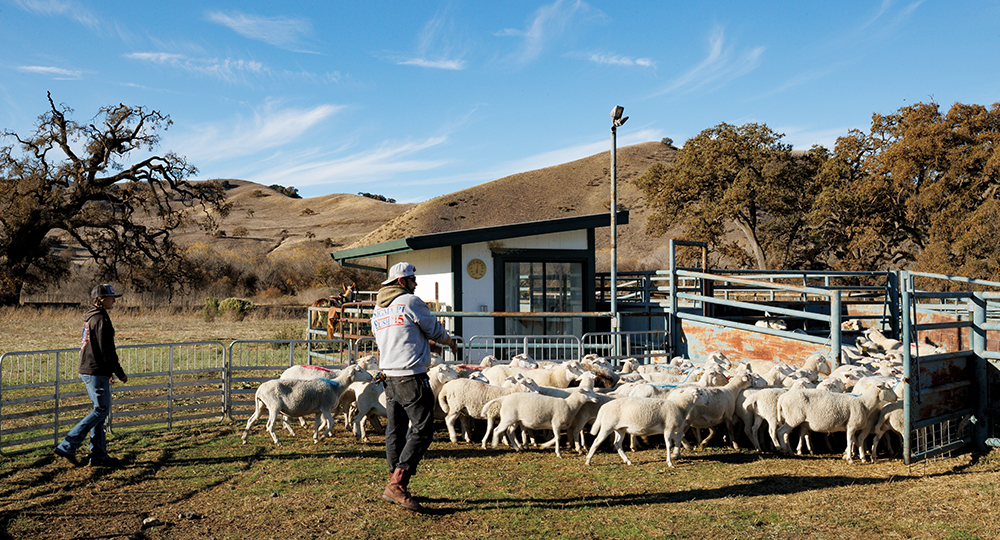
Adjusting Vineyard Layouts for Grazing
The first time Mulville decided to graze sheep during the growing season, he was nervous. He’d grazed cattle and sheep during the fall, winter and spring – after grapes had been harvested. But never while vines were full of ripening fruit.
“Since I’ve been working with livestock, both cattle and sheep, I was familiar with electric fence. So, I set up a system where, on either side of the main trellis, I put a hot wire, offset just below the fruit,” he says. “With that, I figured the sheep would not try to eat the fruit or the shoots capturing sunlight to ripen the fruit. But whatever came down into their browsing zone was theirs to take.”
Mulville estimated where the best location for the hot wire would be and tested it out. To his surprise, his first attempt worked. The sheep grazed year-round without interfering with the grapes. But it wasn’t until the enterprise had a couple of growing seasons of success that he realized the environmental benefits of the pairing. In the third year of year-round grazing, he decided to run the numbers on his experiment.
“I looked at the system and asked myself, ‘what were the water savings, if any? What cost were we able to reduce through grazing in the vineyard?’”
Mulville did the math and realized he had saved between $500 and $1,000 per acre over that year.
“One of the big surprises was we had a 90% reduction in irrigation use compared to the control site. The winemaker and I both just thought, ‘how can that be?’” he says.
“I think a big part of it was that a lot of vineyards in California are over-irrigated. But for us that year, the way that I determined when to irrigate was primarily by watching the shoot tips. When the tips slow down you need to add irrigation, and that year I only irrigated once.”
Grazing livestock in the vineyard improved soil health and structure, and with it, water-holding capacity, meaning longer periods between rain or irrigation events didn’t limit the vines’ growth.
The system worked so well, the winemaker encouraged Mulville to write an article about his experience. He did, and it was published in Australian & New Zealand Grapegrower & Winemaker magazine and, later, Acres U.S.A. magazine.
His success led to more opportunities to share his experience and to a new job working for Sallie Calhoun of Paicines Ranch.

A Fresh Start
“The funny thing was, I’d been modifying existing vineyards so that you could graze them throughout the growing season,” says Mulville. “But what I really wanted was to start from the ground up and redesign the way that we grow grapevines.”
Calhoun hoped to give Mulville the opportunity to do just that. She purchased the storied California ranch a few years before with the intention of restoring native grasslands to the ranch and reviving ecosystems within the land through regenerative practices. She offered Mulville a role in helping shape the future of the ranch, especially its vineyard.
“When she offered me a position at Paicines Ranch, I said, ‘I don’t know how to build a vineyard to graze year-round. I have ideas, but I’ve never done this before so I can’t guarantee you anything. It could be a complete disaster.’ And she said, ‘well, let’s try.’”
Mulville’s experiences at other vineyards informed his plans for Paicines Ranch. He started in 2017 with a 25-acre vineyard divided into two parts.
There are a couple of issues Mulville knew he had to contend with: food safety and crop damage. Luckily, Paicines grows wine grapes, which go through a fermentation process that ensures the final product – wine – won’t carry any livestock pathogens.
“If there was some type of biological organism that might be problematic, the fermentation would take care of that,” he says.
When designing a vineyard from scratch, Mulville knew he had to take into account not only what’s best for the grape vines but also for the sheep. So he built a taller trellis system that allows sheep to graze underneath without disturbing the fruit-bearing ends of each vine.
Because the grazing-based vineyard at Paicines Ranch is half as dense with vines as most vineyards in California, Mulville’s trellises are almost 6 feet tall and spaced 12 feet apart, two to three times the industry standard. What’s more, each vine is spaced 6 feet apart. When vines are mature, they grow beyond the trellis tops and lay horizontally across a few wires, keeping the fruit out of reach of hungry sheep.
“We have almost half the density of vines and half the trellis infrastructure. This means it’s less expensive to establish a vineyard like this, but at the same time we are getting yields that are comparable to higher-density plantings and quality that is comparable to some of the best vineyards in the state.”
Mulville believes the high yields can be attributed to his focus on biodiversity and soil health. The trellis system allows the fruitbearing shoots to shade the rows where the sheep graze. The added shade keeps the vineyard floor cooler and the sheep comfortable. And that’s just one of the many symbiotic benefits Mulville has discovered in his vineyard’s ecosystem.
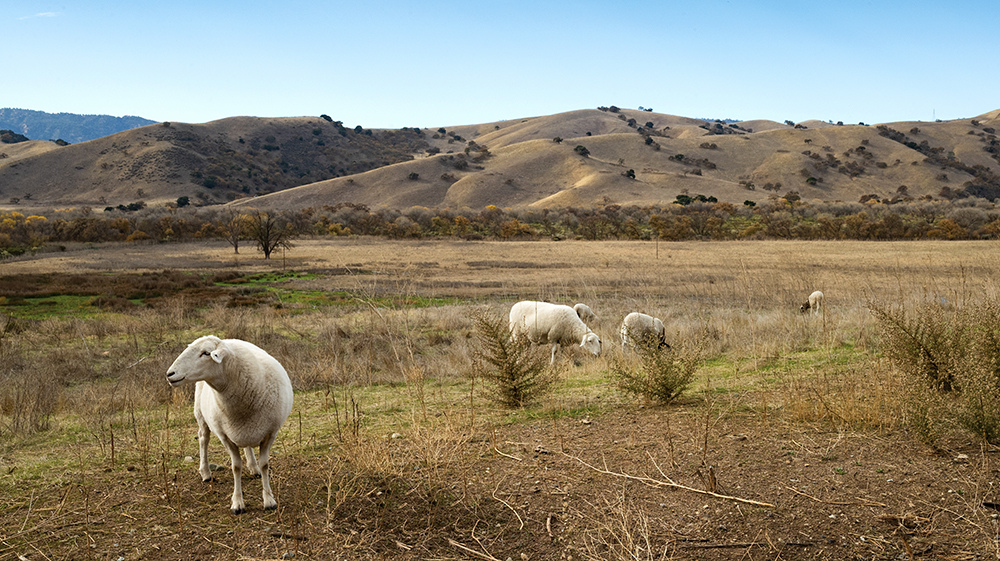
Compounding Benefits for Grapes and Sheep
Mulville approaches his work like a researcher. He’s set up a test plot and a controlled section of the vineyard to compare outcomes between the two sections.
“We are doing a lot of monitoring – soil health, soil microbes, plant species, insects – and we’re learning a lot about bird species,” he says. He’s recently partnered with a Ph.D. student who is working with several vineyards in central California to compare plant diversity.
In 2017, the ranch conducted a botanical survey on what is now part of the vineyard. At that time, there were 11 species of plants growing. Fast forward to 2024, the same site now has more than 100 species of plants.
“Before we planted the vines, we had three years of cover crops and holistically planned grazing to increase soil health,” Mulville says. “Those plants reseeded themselves, and I’ve not planted any cover crops in the last four years. Most of the plants growing in here now are native plants.”
Mulville believes there’s a natural – perhaps even necessary – compatibility between grazing animals and grape vines. When he compares his grazed vineyard to the control section, he can pinpoint the difference.
“Most plants allow themselves to be grazed. If they didn’t want to be grazed, they could produce thorns or toxins. But there are numerous plants that can be grazed – including grape vines. For ecological symbiosis to occur, there need to be benefits going both ways.”
A lifelong student, Mulville investigated this relationship further. He discovered that as an animal grazes a plant, they leave behind saliva. The chemical makeup of the animal’s saliva stimulates the plant to regrow.
“We’re seeing that when the sheep are in contact with the vines, especially during the growing season, the Brix level goes up,” says Mulville. Brix is a method of measuring sugar content in grapes and other crops, but it’s also an indicator of vine health. Higher Brix levels contribute to an increased resistance to insect and disease damage which reduces the need for additional inputs.
“The compounding effect of that is a dramatic increase in biodiversity. Our soil health is improving. Soil carbon levels and the water-holding capacity are going up, which reduces irrigation needs.”
By focusing on restoring biodiversity and soil health, Mulville has been able to amplify outcomes for both sheep and grapes.
“The more we learn to stay out of the way and allow nature to flourish, the healthier the ecosystem becomes and the less work it takes,” he says.
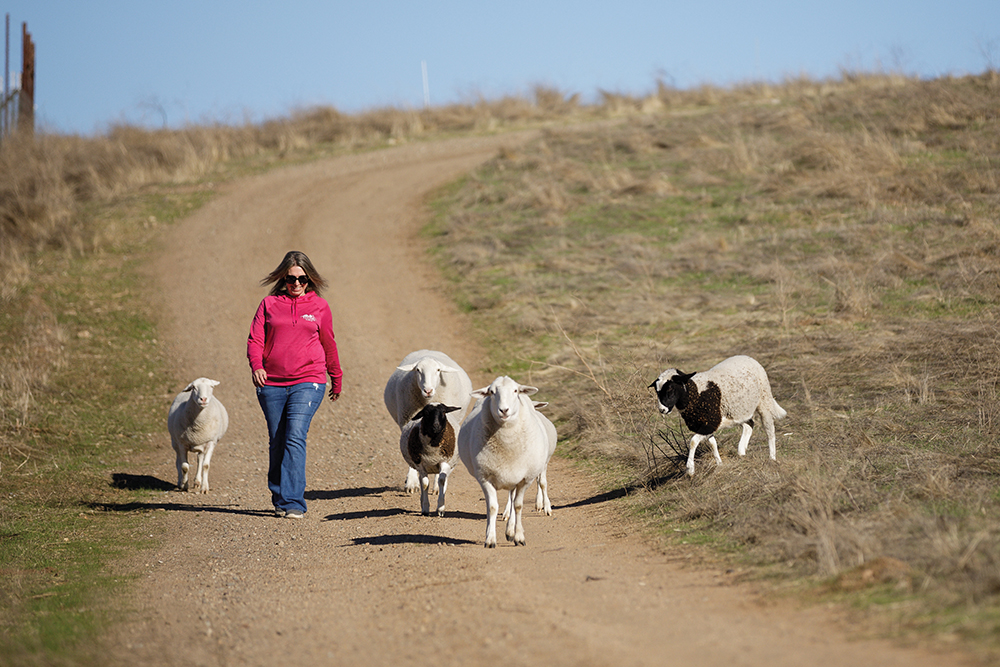
Saving Time and Money with Grazing
Since bringing in sheep to graze the vineyard year-round, Mulville has noticed several benefits to vine health and productivity, soil health and ecosystem diversity. But he’s also measuring how this system affects his time and budget.
“In this system, the sheep do a lot of the work formerly done by humans, tractors and inputs,” says Mulville. “The sheep can browse-graze the floor vegetation, which eliminates mowing between the row, and they graze under the vines, which reduces under-vine cultivation. And the sheep recycle those nutrients through their digestive system, creating fertilizer – especially the urine – that’s concentrated and available to the grape vines.”
This past growing season, Mulville sprayed foliar fertilizer four times. When he compares that to other vineyards in the area, he finds “the majority of vineyards in California are probably doing 10 to 18 sprays a year.”
While sheep play a large role in reducing the need to fertilize, Mulville also changed how he evaluates the need to fertilize. Instead of using plant tissue samples, he now does sap analysis. He feels this method gives him a more accurate read on what the plants need at a given moment.
“As we’ve continued addressing nutrient deficiencies and built up the soil health through proper grazing management, we’ve been able to use less and less of those sprays,” he says.
He’s hopeful his approach will catch on at other vineyards. Mulville’s committed to continuing to learn and refine his approach, all while finding ways to share what’s worked and what hasn’t worked for him. Last year, Paicines Ranch offered a workshop on regenerative wine growing that garnered a lot of attention and attendance.
Even though interest is starting to bloom among growers, he knows it’s going to take time. Few understand better than Mulville the patience and persistence needed when waiting for an ecosystem to evolve.

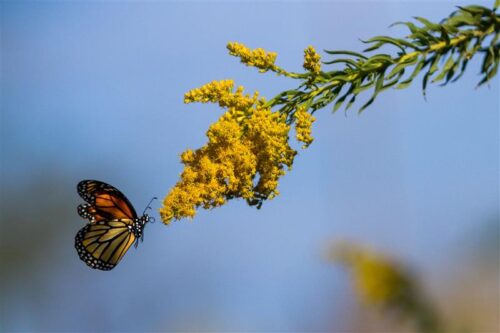
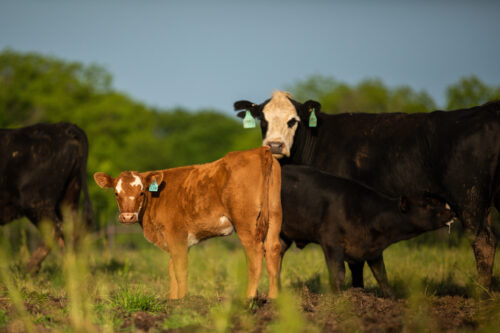
Comment